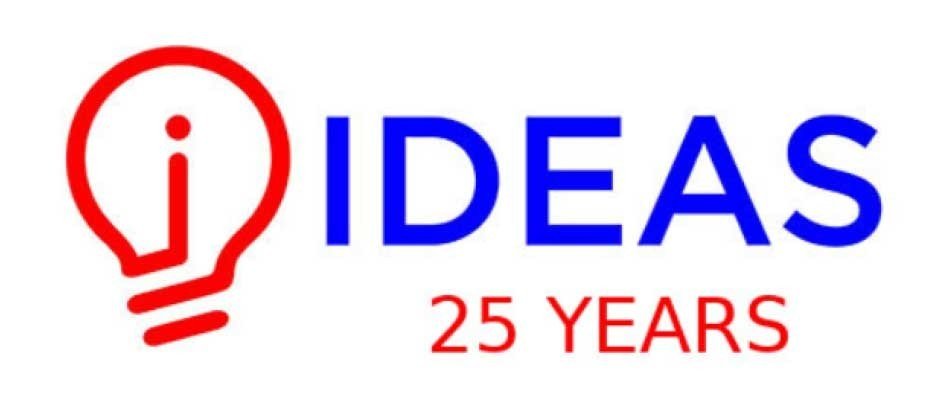| ISSN | 2615-9813 |
| ISSN (số cũ) | 1859-3682 |
Số 230 | Tháng 5/2025
Truyền thông công nghệ và đổi mới trong hoạt động kinh doanh ngân hàng: Tiếp cận bằng phương pháp hồi quy bảng động
Trần Thị Thanh Nga
Tóm tắt:
Nghiên cứu phân tích vai trò của truyền thông công nghệ và đổi mới (Technology and innovation communication - TIC) trong hoạt động kinh doanh ngân hàng bằng phương pháp hồi quy dữ liệu bảng động (Arellano & Bond, 1991). Bên cạnh đó, tác giả xem xét có sự thống trị của một số ngân hàng lớn tại Việt Nam trong hoạt động TIC hay không? Nghiên cứu đã tìm thấy hoạt động TIC có sự khác nhau giữa các nhóm ngân hàng, đặc biệt nhóm ngân hàng lớn, riêng với nhóm ngân hàng nhỏ, thì mối liên hệ chưa rõ ràng, do áp lực về chi phí quản lý cao làm hạn chế mức độ sẵn sàng thích ứng công nghệ. Ngoài ra, các biến đặc trưng ngân hàng cùng có mức độ và xu hướng tác động không đồng nhất đối với ổn định ngân hàng (BS) ở những nhóm tổ chức khác nhau. Phát hiện này rất quan trọng trong việc đề xuất xây dựng các chính sách phù hợp để thúc đẩy quá trình đổi mới công nghệ trong lĩnh vực ngân hàng, đối với nhóm những ngân hàng nhỏ bị giới hạn về nguồn lực nội tại. Bên cạnh đó, nghiên cứu đề xuất những hàm ý chính sách quan trọng cho các cơ quan quản lý, trong việc thiết kế các chiến lược phù hợp với từng ngân hàng để phát triển công nghệ nhằm thúc đẩy cạnh tranh ở bối cảnh chuyển đổi số.
Tài liệu tham khảo:
- Appiahene, P., Missah, Y. M., & Najim, U. (2019). Evaluation of information technology impact on bank’s performance: The Ghanaian experience. International Journal of Engineering Business Management, 1(11). Doi: https://doi.org/10.1177/1847979019835337.
- Arellano, M., & Bond, S. (1991). Some tests of specification for panel data: Monte Carlo evidence and an application to employment equations. The Review of Economic Studies, 58(2), 277-297. Doi: https://doi.org/10.2307/2297968.
- Arellano, M., & Bover, O. (1995). Another look at the instrumental variable estimation of error-components models. Journal of Econometrics, 68(1), 29-51. Doi: https://doi.org/10.1016/0304-4076(94)01642-D.
- Babar, S., Latief, R., Ashraf, S., & Nawaz, S. (2019). Financial stability index for the financial sector of Pakistan. Economies, 7(3), 81. Doi: https://doi.org/10.3390/economies7030081.
- Banna, H., Hassan, M. K., & Rashid, M. (2021). Fintech-based financial inclusion and bank risk-taking: Evidence from OIC countries. Journal of International Financial Markets, Institutions and Money, 75, 101447. Doi: https://doi.org/10.1016/j.intfin.2021.101447.
- Beccalli, E. (2007). Does IT investment improve bank performance? Evidence from Europe. Journal of Banking Finance, 31(7), 2205-2230. Doi: https://doi.org/10.1016/j.jbankfin.2006.10.022.
- Berger, A. N., Boubakri, N., Guedhami, O., & Li, X. (2019). Liquidity creation performance and financial stability consequences of Islamic banking: Evidence from a multinational study. Journal of Financial Stability, 44, 100692. Doi: https://doi.org/10.1016/j.jfs.2019.100692.
- Bhasin, K. (2012). This Is The Difference Between'Invention'And'Innovation'. Business insider, 5.
- Blundell, R., & Bond, S. (1998). Initial conditions and moment restrictions in dynamic panel data models. Journal of econometrics, 87(1), 115-143. Doi: https://doi.org/10.1016/S0304-4076(98)00009-8.
- Bollaert, H., Lopez-de-Silanes, F., & Schwienbacher, A. (2021). Fintech and access to finance. Journal of Corporate Finance, 68, 101941. Doi: https://doi.org/10.1016/j.jcorpfin.2021.101941.
- Čihák, M., & Hesse, H. (2010). Islamic banks and financial stability: An empirical analysis. Journal of Financial Services Research, 38, 95-113. Doi: https://doi.org/10.1007/s10693-010-0089-0.
- Chan, Y.-S., Greenbaum, S. I., & Thakor, A. V. (1986). Information reusability, competition and bank asset quality. Journal of Banking & Finance, 10(2), 243-253. Doi: https://doi.org/10.1016/0378-4266(86)90008-7.
- Chen, J., Zhu, Z., & Zhang, Y. (2017). A study of factors influencing disruptive innovation in Chinese SMEs. Asian Journal of Technology Innovation, 25(1), 140-157. Doi: https://doi.org/10.1080/19761597.2017.1302552.
- Chen, M. A., Wu, Q., & Yang, B. (2019). How valuable is FinTech innovation? The Review of Financial Studies, 32(5), 2062-2106. Doi: https://doi.org/10.1093/rfs/hhy130.
- Chen, Z., Li, H., Wang, T., & Wu, J. (2023). How digital transformation affects bank risk: Evidence from listed Chinese banks. Finance Research Letters, 58, 104319. Doi: https://doi.org/10.1016/j.frl.2023.104319.
- Cheng, M., & Qu, Y. (2020). Does bank FinTech reduce credit risk? Evidence from China. Pacific-Basin Finance Journal, 63, 101398. Doi: https://doi.org/10.1016/j.pacfin.2020.101398.
- Dang, V. D. (2022). Bank funding, market power, and the bank liquidity creation channel of monetary policy. Research in International Business and Finance, 59, 101531. Doi: https://doi.org/10.1016/j.ribaf.2021.101531.
- Daud, S. N. M., Khalid, A., & Azman-Saini, W. (2022). FinTech and financial stability: Threat or opportunity? Finance Research Letters, 47, 102667. Doi: https://doi.org/10.1016/j.frl.2021.102667.
- Farouk, B. K. U., & DanDago, K. I. (2015). Impact of investment in information technology on financial performance of Nigerian banks: Is there a productivity paradox. Journal of Internet Banking Commerce, 20(1), 1-22. http://www.arraydev.com/commerce/jibc/.
- FICO. (2021). Advancing new experiences in digital banking: Asia Pacific digital banking consumer study.
- Fung, D. W., Lee, W. Y., Yeh, J. J., & Yuen, F. L. (2020). Friend or foe: The divergent effects of FinTech on financial stability. Emerging Markets Review, 45, 100727. Doi: https://doi.org/10.1016/j.ememar.2020.100727.
- Frankelius, P. (2009). Questioning two myths in innovation literature. The Journal of High Technology Management Research, 20(1), 40-51. https://doi.org/10.1016/j.hitech.2009.02.002.
- Gupta, S. D., Raychaudhuri, A., & Haldar, S. K. (2018). Information technology and profitability: evidence from Indian banking sector. International Journal of Emerging Markets, 13(5), 1070-1087. Doi: https://doi.org/10.1108/IJoEM-06-2017-0211.
- Herck Giaquinto, L., & Bortoluzzo, A. B. (2020). Angel investors, seed-stage investors and founders influence on FinTech funding: an emerging market context. Macroeconomics and Finance in Emerging Market Economies, 13(3), 276-294. Doi: https://doi.org/10.1080/17520843.2020.1737169.
- Houston, J. F., Lin, C., Lin, P., & Ma, Y. (2010). Creditor rights, information sharing, and bank risk taking. Journal of financial Economics,, 96(3), 485-512. Doi: https://doi.org/10.1016/j.jfineco.2010.02.008.
- Hu, D., Zhao, S., & Yang, F. (2024). Will fintech development increase commercial banks risk-taking? Evidence from China. Electronic Commerce Research, 24(1), 37-67. Doi: https://doi.org/10.1007/s10660-022-09538-8.
- Huang, T.-H., Lin, C.-I., & Chen, K.-C. (2017). Evaluating efficiencies of Chinese commercial banks in the context of stochastic multistage technologies. Pacific-Basin Finance Journal, 41, 93-110. Doi: https://doi.org/10.1016/j.pacfin.2016.12.008.
- Jameaba, M.-S. (2024). Financial Inclusion, Poverty Incidence and Financial Stability. Poverty Incidence and Financial Stability (August 23, 2024).
- Köhler, M. (2015). Which banks are more risky? The impact of business models on bank stability. Journal of Banking Finance, 16, 195-212. Doi: https://doi.org/10.1016/j.jfs.2014.02.005
- Khan, M. S., Scheule, H., & Wu, E. (2017). Funding liquidity and bank risk taking. Journal of Banking & Finance, 82, 203-216. Doi: https://doi.org/10.1016/j.jbankfin.2016.09.005
- Khattak, M. A., Ali, M., Azmi, W., & Rizvi, S. A. R. (2023). Digital transformation, diversification and stability: What do we know about banks? Economic Analysis and Policy, 78, 122-132. Doi: https://doi.org/10.1016/j.eap.2023.03.004
- Laeven, L., & Levine, R. (2009). Bank governance, regulation and risk taking. Journal of Financial Economics, 93(2), 259-275. Doi: https://doi.org/10.1016/j.jfineco.2008.09.003
- Leckson-Leckey, G. T., Osei, K. A., & Harvey, S. K. (2011). Investments in information technology (IT) and bank business performance in Ghana. International Journal of Economics Finance, 3(2), 133-142. Doi: 10.5539/ijef.v3n2p133
- Lee, Li, X., Yu, C.-H., & Zhao, J. (2021). Does fintech innovation improve bank efficiency? Evidence from China’s banking industry. International Review of Economics & Finance, 74, 468-483. Doi: https://doi.org/10.1016/j.iref.2021.03.009
- Liem, N. T., Son, T. H., Tin, H. H., & Canh, N. T. (2022). Fintech credit, credit information sharing and bank stability: Some international evidence. Cogent Business & Management, 9(1), 2112527. Doi: https://doi.org/10.1080/23311975.2022.2112527
- Nguyen, Q. K. (2022). The effect of FinTech development on financial stability in an emerging market: The role of market discipline. Research in Globalization, 5, 100105. Doi: https://doi.org/10.1016/j.resglo.2022.100105
- Maranville, S. (1992). Entrepreneurship in the business curriculum. Journal of Education for Business, 68(1), 27-31. https://doi.org/10.1080/08832323.1992.10117582
- Nguyen, Q. K., & Dang, V. C. (2023). The impact of FinTech development on stock price crash risk and the role of corporate social responsibility: Evidence from Vietnam. Business Strategy & Development, 6(4), 557-570. Doi: https://doi.org/10.1002/bsd2.262
- Peng, Y., & Tao, C. (2022). Can digital transformation promote enterprise performance? From the perspective of public policy and innovation. Journal of Innovation & Knowledge, 7(3), 100198. Doi: https://doi.org/10.1016/j.jik.2022.100198
- Pierri, M. N., & Timmer, M. Y. (2020). Tech in fin before fintech: Blessing or curse for financial stability? International Monetary Fund.
- Pham, M. H., & Nguyen, N. M. (2023). Bank funding diversity, risk and profitability: Evidence from Vietnam in the context of the Covid-19 pandemic. Cogent Business & Management, 10(1), 2191305. Doi: https://doi.org/10.1080/23311975.2023.2191305
- Phan, D. H. B., Narayan, P. K., Rahman, R. E., & Hutabarat, A. R. (2020). Do financial technology firms influence bank performance? Pacific-Basin finance journal, 62, 101210. Doi: https://doi.org/10.1016/j.pacfin.2019.101210
- Roy, A. D. (1952). Safety first and the holding of assets. Econometrica: Journal of The Econometric Society, 431-449. Doi: 10.2307/1907413.
- Sheng, T. (2021). The effect of fintech on banks’ credit provision to SMEs: Evidence from China. Finance Research Letters, 39, 101558. Doi: https://doi.org/10.1016/j.frl.2020.101558
- Thanh Le, P., Gholipour, H. F., & Arjomandi, A. (2024). Navigating banking transitions: insights into competition and stability from Vietnam’s experience. Post-Communist Economies, 1-18. Doi: https://doi.org/10.1080/14631377.2024.2329392
- Udin, S., Bujang, I., & Noemi, N. C. (2024). A Gold Mine: The Importance of Information and Communication Technology (ICT) on Bank Liquidity in Asia and the Pacific. ASEAN Journal on Science and Technology for Development, 41(2), 2. Doi: https://doi.org/10.61931/2224-9028.1567
- Vučinić, M. (2020). Fintech and Financial Stability Potential Influence of FinTech on Financial Stability, Risks and Benefits. Journal of Central Banking Theory Practice, 9(2), 43-66. Doi: 10.2478/jcbtp-2020-0013.
- Wang, R., Liu, J., & Luo, H. (2021). Fintech development and bank risk taking in China. The European Journal of Finance, 27(4-5), 397-418. Doi: https://doi.org/10.1080/1351847X.2020.1805782.
- Wu, X., Jin, T., Yang, K., & Qi, H. (2023). The impact of bank FinTech on commercial banks' risk-taking in China. International Review of Financial Analysis, 90, 102944. Doi:https://doi.org/10.1016/j.irfa.2023.102944.
- Zuo, L., Strauss, J., & Zuo, L. (2021). The digitalization transformation of commercial banks and its impact on sustainable efficiency improvements through investment in science and technology. Sustainability, 13(19), 11028. Doi: https://doi.org/10.3390/su131911028.
Technology and Innovation Communication in Banking Business: A Dynamic Panel Data Approach
Abstract:
The study analyzes the role of technology and innovation communication (TIC) in banking business activities using a dynamic panel data regression analysis (Arellano & Bond, 1991). In addition, do we consider whether some large banks in Vietnam dominate in technology and innovation communication activities? The study found that technology and innovation communication (TIC) activities are different between banking groups, especially the group of large banks. In particular, with the group of small banks, the relationship is not clear, possibly due to the pressure of high management costs, so the level of readiness to adapt to technology is not yet available. In addition, bank-specific variables also have different levels and trends of impact on BS in different banking groups. These findings suggest appropriate policies for small banks with limited internal resources to promote technological innovation in the banking sector. In addition, the study also proposes essential policy implications for regulators in designing appropriate strategies for each bank to develop technology to promote competition in the context of digital transformation.







